Clipart tagged: ‘urodela’

Frog Egg
"The Tadpole is the larva of the anurous amphibia, sometimes so far extended as to include larvaæ…
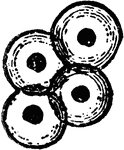
Frog Eggs
"The Tadpole is the larva of the anurous amphibia, sometimes so far extended as to include larvaæ…
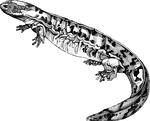
Alleghany hell-bender
"It is one to two feet long, dark slate color, feeds on worms, crawfish, fishes, and aquatic reptiles.…
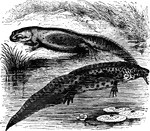
Smooth newt
"It is three and a half inches long, the skin smooth as a frog's; it lives in ponds and ditches, and…

Violet-colored salamander
"Is five to seven inches long,; blueish-black, with bright yellow spots; habits nocturnal, living under…
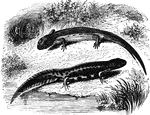
Salamanders
"The Land Salamanders, unlike the Tritons, are ovo-viparous, though the young at first inhabit the water…

Tadpole
"The Tadpole is the larva of the anurous amphibia, sometimes so far extended as to include larvaæ…

Tadpole
"The Tadpole is the larva of the anurous amphibia, sometimes so far extended as to include larvaæ…
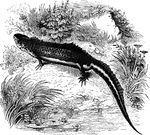
Common warty-newt
The common warty-newt of Europe... is six inches long, and is common in large ponds and ditches, where…